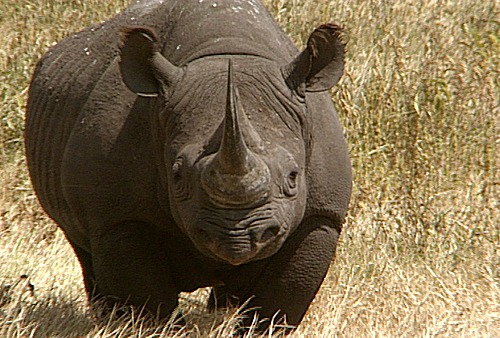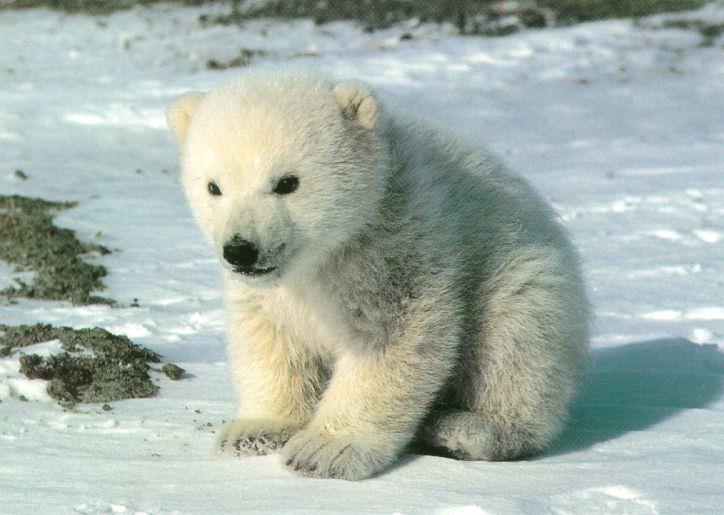Countless species of animals have been wiped off the face of this earth by a powerful force. It's unstoppable, unbeatable, undeniable. It's all-mighty, and rules this planet with an iron fist. If you rise up against it, it will knock you back down.
Who is it, you ask?
It's us.
Gray Wolves:
 During the 1900’s the gray wolf was almost completely wiped out.
During the 1900’s the gray wolf was almost completely wiped out.It was on the U.S. endangered species list.
Some states took action to have them removed.
The elimination of wolves from the famous park was caused by humans who perceived them as a danger to livestock and family, specifically children.
With the wolves gone, the natural predator removed, the elk population exploded, causing a severe adverse affect on other species.
Domestic dogs have a worse history with humans than gray wolves do:
“There has never been a documented case of serious injury or death from a gray wolf attack on humans in North America… Between 1979 and 1996 there were 301 documented cases of deaths in the US by domestic dog attacks.”
“There has never been a documented case of serious injury or death from a gray wolf attack on humans in North America… Between 1979 and 1996 there were 301 documented cases of deaths in the US by domestic dog attacks.”
(-http://elizabethmeltonparsons.wordpress.com/2008/07/19/north-american-gray-wolf/)
The last remaining gray wolf in Yellowstone National Park was killed in 1926.
Yes, one of the United States' great wilderness parks contained NO WOLVES. They were entirely killed off.
But, as most of you know, this species' story has a happy ending.
The U.S. Fish and Wildlife Service (USFWS) listed the eastern timber wolf (Canis lupus lycaon) as endangered in 1967. The northern Rocky Mountain subspecies (Canis lupus irremotus) was enlisted as endangered in 1973
In 1978, all members of the species Canis lupus south of Canada as endangered.
In 1980, the Northern Rocky Mountain Wolf Recovery Team made a plan to help recovery efforts for a future wolf population.
By the end of 1994, there were about 48 wolves in Glacier National Park.
In 1995, three family groups (about 14 wolves total) were transported from Alberta’s Jasper National Park to Yellowstone National Park. They spent 10 weeks in acclimation pens before being released.
Two of the females had a combined total of nine pups, and most of the wolves settled in the general area near the acclimation pens, showing the potential advantages of a ‘soft’ release.
These wolves continued to thrive, gradually spreading out and re-populating the area with the largest canine on this planet.
Now here are some of the more current species in danger:
Polar Bears
Every year, polar bears lose more of the precious ice they call home.
Every month, their hunting grounds shrink, and they have to swin farther.
Every day, a polar bear drowns.
Every day, a polar bear dies of starvation. After swimming for so long, he has no energy to hunt. He can catch no food.
Panda Bears
More and more are shoved out of their homes.
They are trapped for their fur, or for the illegal wildlife trade.
These cute, so-called cuddly creatures are being removed from our planet. By us. We are responsible, and we can help make a difference.
Siberian Tiger
Just like the panda bear, the siberian tiger is slowly disappearing. They too are being forced from their homes, and hunted for their beautiful pelts. Three species of tiger are already extinct.
Rhinos

Rhinos once roamed throughout Eurasia and Africa, and were known to early Europeans who depicted them in cave paintings.
Within historical times, rhinos were still widespread in the African savannas and the tropical forests of Asia.
Today however, very few rhinos now survive outside national parks and reserves. http://www.worldwildlife.org/species/finder/rhinoceros/rhinos.html
Elephants
These large and magnificent creatures need a lot of food and freedom if they are to survive.
They wander in small to large herds over sometimes incredibly large areas while consuming up to several hundred pounds of plant matter in a single day.
Elephants, in fact, place such great demands on their own environment that in order to survive, they frequently come into conflict with people who are competing for many of the same, often scarce, resources.




